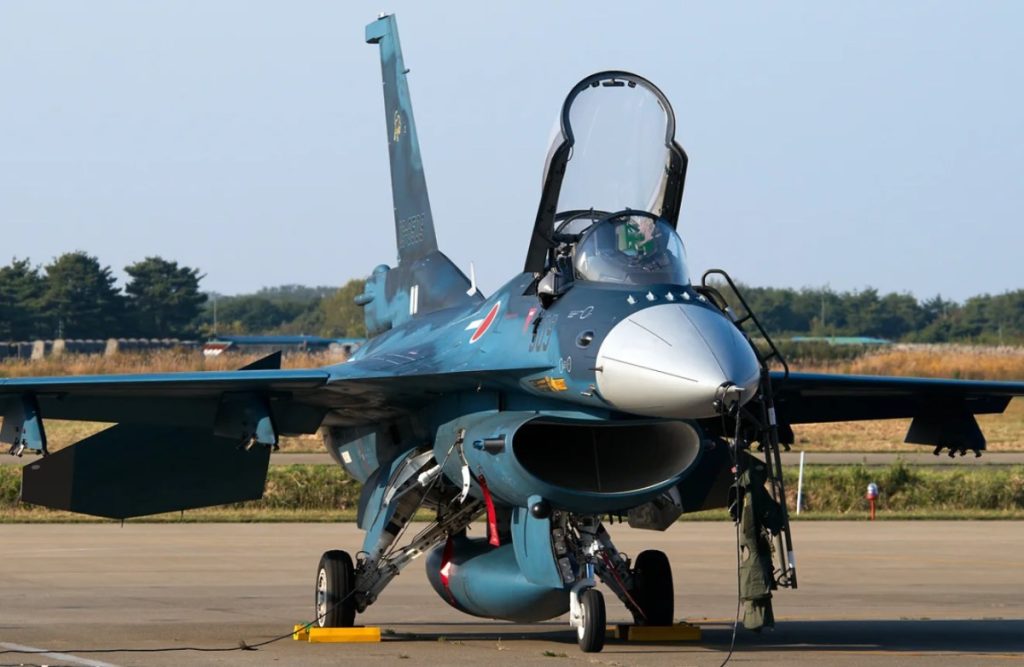
The Mitsubishi F-2 is not only a fighter, but also Japan’s conservative strategy to modernize without the cost of no longer being able to credibly deter in the high-tech area. A joint venture between Mitsubishi Heavy Industries and Lockheed Martin, the F-2 was conceived to replace the aging multi-role fighter Mitsubishi F-1 of the Japan Air Self-Defense Force (JASDF). The production of F-2 is a blend of Japan’s new upcoming technology and practical solution technology to its defense needs.

F-2 heritage dates back to its formative years when Japan’s Technical Research and Development Institute desired a fighter with long range but never sacrifice maneuverability in the early 1980s. It would be very difficult to produce an aircraft domestically, so the program utilized the then-solved F-16C Block 40 as the platform of the program and began the FS-X program in 1988.

This was the first Japan and America co-development on a Japanese-paid-for-out-of-its-own-domestic-defense-needs fighter. What they have been left with is an F-16 derivative but with enormous modifications to fit Japan’s own special operating requirements.

Perhaps most obviously visible, perhaps, on the F-2 is a 25% longer wingspan than the F-16’s, to offer greater maneuverability and to be able to shed more weight in loads. The nose also had to be lengthened to fit in more advanced Japanese AESA-type radar, the J/APG-1 at first and subsequently upgraded with the J/APG-2. The canopy of the cockpit takes three dimensions in design in a bid to provide pilots with improved view and stability, a minor but useful tweak from gliding above oceans of atmospheric seas.

It also features intakes and bigger tailplanes, and a short-landing drogue parachute, a welcome touch to an aircraft so highly detailed. The F-2 subsequently went through its modernizations in the later decades when the production started to include gallium-nitride radar systems, more rugged mission computers, and high-spec electronic warfare systems.

Its firepower is also enhanced. Mitsubishi Heavy Industries developed the supersonic ship-to-ship ASM-3A missile that would strike 300 to 400 kilometers with a speed exceeding Mach-3. It carries inertial guidance, GPS, and an active radar seeker to strike the approaching targets, and with stealth technology and electronic countermeasures, it can demolish the enemy land into pieces.

Self-made air-air fighting boats AAM-3, close-ranged infrared-guided missile with hard-to-explose 40G capability and smokeless power plant. F-2 and F-15J employ a heat seeker. Although not yet employed to combat the enemy, the missile has been used as a tool for intimidation to deter and for general purposes for training.

The main mission of the F-2 is defense at sea. Although not necessarily an air defense-only aircraft, it is mainly employed to attack enemy warships and landing forces at the beach in the sea with anti-ship missiles as a way to give Japan some real stand-off capability and to assist in the mission of missile defense.

Inter-alliance cooperation constitutes Japan’s third pillar. In April 2022, the Royal Australian Air Force carried out the initial air-to-air refueling drill for JASDF F-2s from a KC-30A tanker. Training such as Exercises and Exercise Pitch Black increases interoperability and readiness and reinforces the worth of cooperative regional security initiatives. All the same, native Japanese technology foreign-bforeign-basedough the ASM-3A and AAM-3 are native Japanese systems, weapons created in the United States still exist and continue in inventory, negating the existence of a flourishing native defense industry.

Upcoming Japanese advancements are planned in the ASM-3 Kai next-generation advanced missile, which will be longer ranged and AI-guided. Constitutional constraints are placed on advancements as they are defense advancements, but maintaining F-2 technology ahead of the curve and operationally in front.

Successive generations of technology, starting with missile compatibility through to avionics technology, have borne witness to Japan’s determination to continue at the forefront of the pack with each successive technology. With ever-changing security environments emerging, F-2 speed, precision firepower, and interoperability will be at the center of Japanese air power and prepared to deter a menace in the Indo-Pacific.


